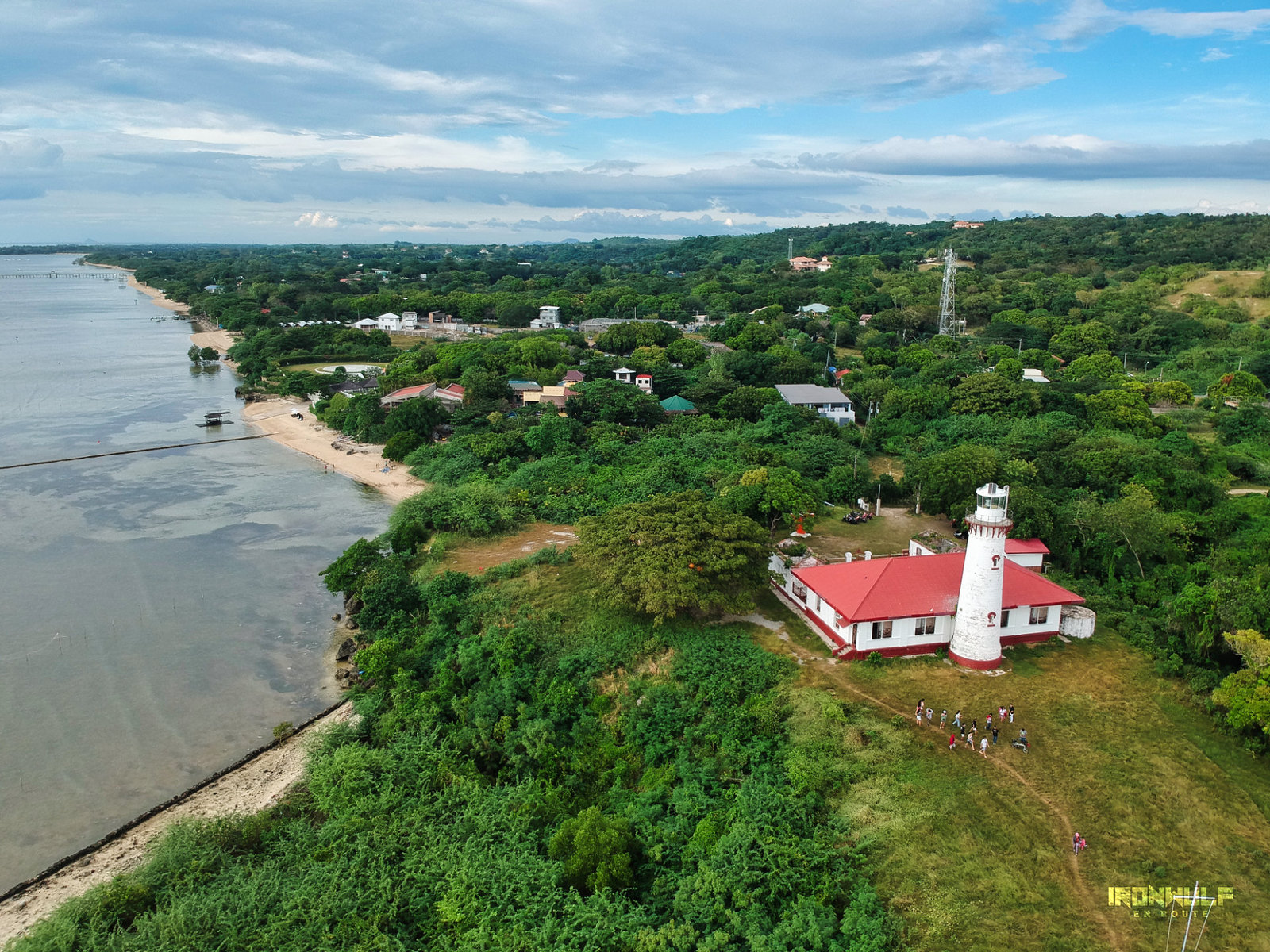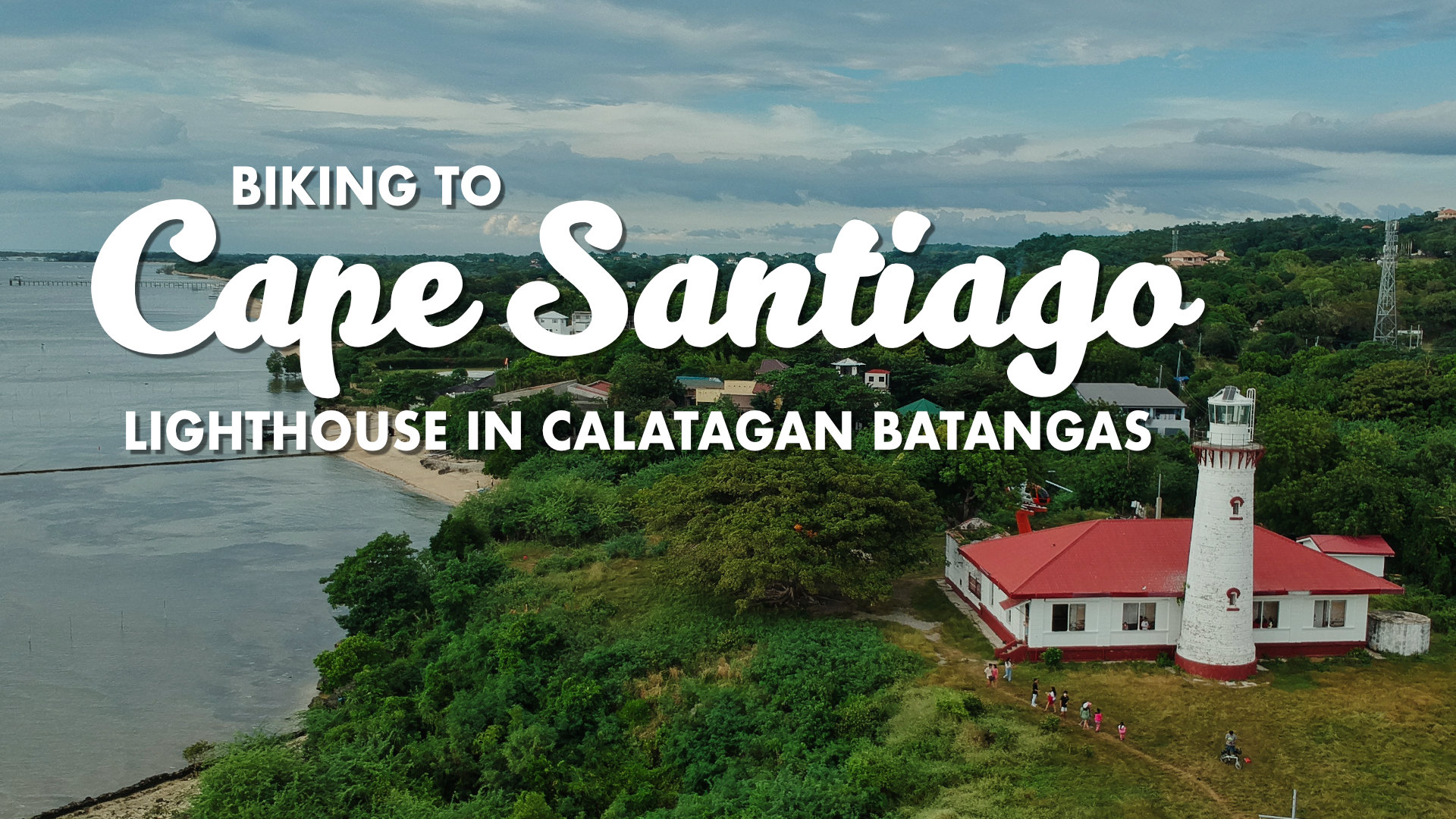Calatagan’s beach has always been the primary reason for my visits to this charming part of Batangas. The picturesque white sands and breathtaking views have lured me back to Stilts Calatagan several times. During my recent trip with family and friends, I decided to bring my folding bike to explore the nearby areas, including the century-old Spanish lighthouse, Cape Santiago, or Faro de Cabo Santiago – one of the well-preserved remnants of Spanish architecture in the country.

Biking to Parola
Located just 6km away from Stilts Calatagan, Cape Santiago rests in the hills of Barangay Bagong Silang, once known as Barangay Parola. The road leading out of the resort was rough, but as soon as I reached the national road, it transformed into a conveniently paved route. Despite being a narrow two-way street, it experienced minimal traffic. I relished the rural ambiance, passing by a few resort establishments scattered amidst vast grasslands and rice fields. Soon, I spotted a small sign pointing to Cape Santiago, leading me back onto a dirt road.

Cape Santiago Lighthouse
Cape Santiago is one of the 24 Spanish lighthouses constructed between 1846 and 1896, as part of the “Masterplan for the Lighting of the Maritime Coast of the Philippine Archipelago.” Although the initial plan was to build 55 lighthouses across the archipelago, only 24 were completed. At the time of writing, 21 of these lighthouses still stand (To be confirmed).
Spanish engineer Magin Pers y Pers, renowned for designing Cape Bojeador and Cape Engaño lighthouses, proposed the site for Cape Santiago. Don Santiago Zobel, a prosperous hacienda landlord, donated a one-hectare plot where the lighthouse stands, giving it its name.
Designed by Spanish engineer Guillermo Brockman, the lighthouse draws inspiration from European castles, constructed with brick and lime in a rounded shape. Adjacent to the tower, the lighthouse keeper’s house was built. It was officially lit on December 15, 1890.

Philippine Coast Guard Takeover
The rough road continues to the gate entrance of the lighthouse area, where non-residents are charged an entrance fee of P50, while Calatagan residents pay P25. The lighthouse is open from 6 a.m. to 5:30 p.m., and there is a parking fee of P10.
A notable feature near the entrance is a Philippine Coast Guard (PCG) Search and Rescue (SAR) helicopter displayed by the ravine. This BQ–105C light utility helicopter, developed by Bulkow of Stuttgart, Germany, in 1967, was constructed by the Coast Guard Aviation Force. In October 2007, the PCG proposed adopting and preserving the lighthouse as its headquarters. On March 17, 2021, the PCG of Calatagan was entrusted with the preservation of the lighthouse.

I explored the area, noticing the National Historical Commission of the Philippines (NHCP) marker on the facade of the lighthouse keeper’s house, designating it as a National Historical Landmark on March 12, 2018.

The surrounding areas were well-maintained and pristine. The best view of the lighthouse was from the back, where its entire 51 feet height and circular structure were visible. Perched atop a hill, it offered a panoramic view of the Verde Island Passage. While access to the actual lighthouse was restricted, the surrounding area provided a breezy and tranquil atmosphere. Cape Santiago stands as an awe-inspiring piece of history that has weathered the harsh environment and the brutality of war. I am delighted to have finally visited this magnificent structure and highly recommend it as a side trip when you’re in Calatagan.

Ferdz Decena is an award-winning travel photographer, writer and blogger. His works has found print in publications such as Singapore Airlines’s Silver Kris, Philippine Airlines’ Mabuhay, Cebu Pacific’s Smile and Seair InFlight. He has also lent his expertise to various organizations like the Oceana Philippines, Lopez Group Foundation, Save the Children and World Vision, contributing quality images for their marketing materials.






